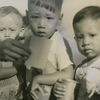Colonial Complicities: Catholic Missionaries, Chinese Elite and Non-kin Support for Chinese Children in Semarang During the 1930s
DOI:
https://doi.org/10.18352/bmgn-lchr.10875Abstract
This article focuses on practices of non-kin support for Chinese children by Catholic missionaries in the orphanage of Kebon Dalem in Semarang in the Dutch East Indies during the 1930s. Catholic missionaries considered this city a kingpin in their efforts to convert the Chinese of the Dutch East Indies to Catholicism. The orphanage operated on the basis of a mostly tacit partnership between these missionaries and the local Chinese elite, that is only partially revealed by the missionaries. The care arrangements for underprivileged Chinese children at Kebon Dalem disclose colonial complicities that challenge current conceptual approaches of missionary non-kin support for children interpreted as strategies to ‘save’ children from their parents, kin, community and culture. In the case of Kebon Dalem, Catholic missionaries collaborated with Chinese partners who valued European standards of child-rearing and education and financially supported the project, which reveals a sense of communal responsibility for underprivileged Chinese children. Catholic missionaries regarded these children as ‘cultural circuit breakers’ that would facilitate instituting Western, Christian principles. To the local Chinese elite, uncared-for children potentially tarnished their already challenged claim to self-rule. By taking co-responsibility for the orphanage of Kebon Dalem, they apparently aimed to demonstrate capable leadership of their community as much as they honoured Chinese charitable traditions. Their support enabled European Catholic missionaries to seek out underprivileged Chinese children for missionary care arrangements, not separated from but in the heart of the religiously plural and tolerant Chinese community of Semarang.
Deze bijdrage draait om de praktijken van zorg die katholieke missionarissen gedurende de jaren 1930 verleenden aan Chinese kinderen met wie zij niet verwant waren. Het onderzoek spitst zich toe op het weeshuis van Kebon Dalem in Semarang in Nederlands-Indië. Voor de missionarissen vormde deze stad het centrum van hun bekeringspogingen van de Chinese minderheid in Nederlands-Indië. Het weeshuis functioneerde op basis van een bondgenootschap tussen deze missionarissen en de lokale Chinese elite. De zorg voor kansarme kinderen in Kebon Dalem laat onvermoede vormen van samenwerking tussen beide partijen zien, waarover de missionarissen publiekelijk niet geheel open waren. De zorgpraktijken waarvoor deze samenwerking de basis legde, kunnen als koloniaal getypeerd worden: georganiseerd volgens westerse normen en geworteld in christelijke concepties van mens, samenleving en gezag. Deze ‘koloniale samenspanningen’ tarten gangbare conceptuele benaderingen van de zorg en opvoeding van kinderen als strategieën van katholieke missionarissen om deze kinderen van hun ouders, familie, gemeenschap en cultuur te ‘redden’. De geschiedenis van Kebon Dalem laat zien dat missionarissen juist samenwerkten met Chinese partners, die waardering hadden voor de Europese opvattingen over het opvoeden en onderwijzen van kinderen. Zij waren bereid dit project financieel en organisatorisch te ondersteunen, waaruit een besef van gedeelde verantwoordelijkheid voor kansarme Chinese kinderen spreekt. Voor katholieke missionarissen belichaamden deze kinderen ‘culturele schakelaars’ via wie westerse, christelijke grondslagen gemakkelijker post zouden kunnen vatten in de koloniale samenleving. Voor de lokale Chinese elite betekenden verwaarloosde kinderen uit de eigen gemeenschap een potentiële ondermijning van hun aanspraken op zelfbestuur. Door medeverantwoordelijkheid voor het weeshuis van Kebon Dalem te nemen streefden ze er kennelijk naar te laten zien dat zij de eigen gemeenschap bekwaam wisten te besturen, terwijl ze tegelijkertijd recht deden aan charitatieve tradities van die gemeenschap. Dankzij deze steun konden Europese katholieke missionarissen kansarme Chinese kinderen voor hun missionaire zorgaanbod zoeken, niet gescheiden van maar juist in het hart van de religieus pluriforme en tolerante Chinese gemeenschap van Semarang.
Downloads

Published
Issue
Section
License
Copyright (c) 2021 BMGN - Low Countries Historical Review

This work is licensed under a Creative Commons Attribution-NonCommercial 4.0 International License.
Authors who publish with this journal agree to the following terms:
a) Authors retain copyright and grant the journal right of first publication with the work simultaneously licensed under a Creative Commons Attribution 4.0 International (CC BY 4.0) that allows others to share the work with an acknowledgement of the work's authorship and initial publication in this journal.
b) Authors are able to enter into separate, additional contractual arrangements for the non-exclusive distribution of the journal's published version of the work (e.g., post it to an institutional repository or publish it in a book), with an acknowledgement of its initial publication in this journal.
c) Authors are permitted to post their work online (e.g., in institutional repositories or on their website) prior to and during the submission process.
Authors are explicitly encouraged to deposit their published article in their institutional repository.











